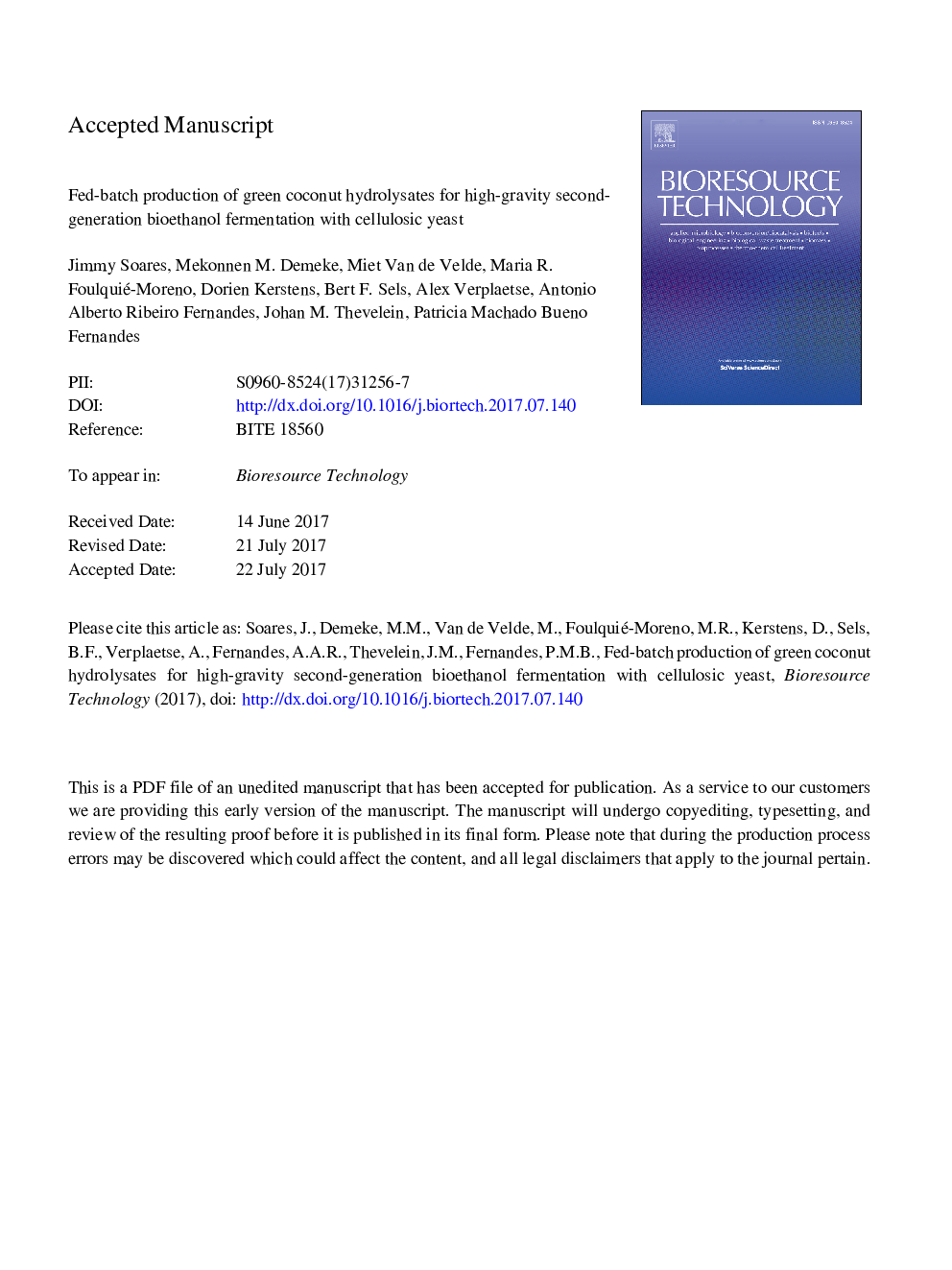| Article ID | Journal | Published Year | Pages | File Type |
|---|---|---|---|---|
| 4996575 | Bioresource Technology | 2017 | 38 Pages |
Abstract
The residual biomass obtained from the production of Cocos nucifera L. (coconut) is a potential source of feedstock for bioethanol production. Even though coconut hydrolysates for ethanol production have previously been obtained, high-solid loads to obtain high sugar and ethanol levels remain a challenge. We investigated the use of a fed-batch regime in the production of sugar-rich hydrolysates from the green coconut fruit and its mesocarp. Fermentation of the hydrolysates obtained from green coconut or its mesocarp, containing 8.4 and 9.7% (w/v) sugar, resulted in 3.8 and 4.3% (v/v) ethanol, respectively. However, green coconut hydrolysate showed a prolonged fermentation lag phase. The inhibitor profile suggested that fatty acids and acetic acid were the main fermentation inhibitors. Therefore, a fed-batch regime with mild alkaline pretreatment followed by saccharification, is presented as a strategy for fermentation of such challenging biomass hydrolysates, even though further improvement of yeast inhibitor tolerance is also needed.
Keywords
Related Topics
Physical Sciences and Engineering
Chemical Engineering
Process Chemistry and Technology
Authors
Jimmy Soares, Mekonnen M. Demeke, Miet Van de Velde, Maria R. Foulquié-Moreno, Dorien Kerstens, Bert F. Sels, Alex Verplaetse, Antonio Alberto Ribeiro Fernandes, Johan M. Thevelein, Patricia Machado Bueno Fernandes,
